July 05, 2007
TEST_LAB: PLAY!
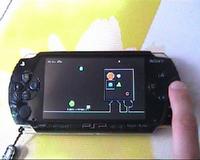
European Art Graduation Projects 2007
TEST_LAB: PLAY: European Art Graduation Projects 2007 :: July 12, 2007, 8:00 p.m. :: V2_Groundfloor, Eendrachtsstraat 10 , Rotterdam :: Free entrance :: Streamed Live :: Invited speakers: Simon Jones (Human-Computer Studies, University of Amsterdam) and Dirk Paesmans and Joan Heemskerk (jodi.org). [Related; Essay by Josephine Bosma.]
Play as a form of social interaction has a rich tradition in various branches of the arts. But it was only recently that human-centered-technology designers realized play offered interesting new approaches and techniques for the development of their field. This brings them together with contemporary artists who explore play by experimenting with a wide range of (often wearable) human-machine interfacing technologies. Such experiments often combine a strong DIY attitude toward technology design with a desire to take advantage of people's naive or intuitive understanding of technology through play. In TEST_LAB: PLAY! the audience and participants will test and discuss the approaches and techniques used to implement play. They will also discuss the broader context of the demonstrated work.
TEST_LAB: PLAY! will feature a selection of the best European electronic-art graduation projects of 2007. The pieces have been selected according to originality and quality, and especially the way they use the concept of play - that is, the playfulness evoked by the work. At TEST_LAB: PLAY! these projects will be demonstrated, tested, and discussed among makers, audience and experts.
Demonstrations:
- Dobrze by Dorota Walentynowicz (Interfaculty Image and Sound, The Hague)
- Block H. by Faith Denham (Goldsmiths, University of London)
- CollecTic by Jonas Hielscher (Media Technology, Leiden University)
- Wi-Fi Straitjacket by Gordan Savicic (University of Applied Arts Vienna)
- Paraphernalia by Nancy Mauro-Flude (Piet Zwart Institute, Hogeschool Rotterdam)
TEST_LAB is a bimonthly public event hosted by V2_, Institute for the Unstable Media, that provides an informal setting for the demonstration, testing, presentation, and discussion of artistic research and development (aRt&D).
For more information, please contact Michel van Dartel (michel[at]v2.nl,
+31-10-206-7272).
Posted by jo at 11:47 AM | Comments (0)
December 19, 2006
Receiver #17
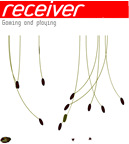
What is play and what's in a game?
Receiver #17 is a truly playful issue. While the urge to play is a human universal, gaming cultures differ widely across different societies – that goes for the games people enjoy as well as how they enjoy them. You can play with interactive media alone or to socialise, to compete or to relax, at home or in the street. What is play and what's in a game? Here are nine answers.
Matt Jones: The space to play :: Play – that is nothing less than how and why we learn, explore, interact with each other, understand each other and develop together. This is what Matt Jones thinks, who authors this receiver's opener. The designer was creative director for the award-winning BBC News Online and, after some time as a consultant at Sapient and KPMG, returned to the BBC to design BBCi's web search and an ambitious social software service. For the past three years he has been at Nokia, firstly in design research and now as Director of User-Experience Design for Nokia Design Multimedia. In "The space to play" he explores themes from his research into the universal human urge to play – and how it relates to the way we design our technology, our environments and our future.
D.B. Weiss: Lucky Wander Boy – the microsurgeon winner :: Los Angeles based D.B. Weiss is currently in the headlines for working on the script for a movie adaption of the "Halo" video game series that is scheduled for release in 2008. But that's not why we asked him to join receiver's gaming and playing issue. He indulged his playing passion already in his smart debut novel Lucky Wander Boy, a story about a man who finds a purpose through and is ruined by his obsession with video games. Of which we want to reprint an excerpt here. Read it – or listen to the podcast.
Jim Rossignol: Gaming international :: Jim Rossignol is a British technology author specialising in video games. His work appears in Wired, PC Gamer UK and the web development portal Gamasutra.com. His essay on Korean gaming culture was recently republished as part of the DigitalCultureBooks anthology The Best of Technology Writing 2006. Rossignol is currently researching a book on gaming culture and keeps a research blog at www.big-robot.com. In "Gaming international", he tells us about the experiences he gained during a visit to Seoul and compares European and Asian approaches to gaming.
Stuart Dredge: Mobile gaming – the troubled teenage years :: Stuart Dredge is a technology writer whose key areas of knowledge are mobile entertainment and consumer technology – fields in which he has also worked as an analyst. He covers mobile gaming as a freelance writer for several industry publications, edits the mobile games section of consumer website Pocket Gamer and covers consumer technology for Tech Digest. In his receiver contribution, Dredge takes a look at the future of mobile gaming, focusing on how mobile games could move beyond the familiar hits like Tetris and Pac-Man to new concepts blending innovation and connectivity.
Auriea Harvey and Michaël Samyn: Games in spite of themselves :: Tale of Tales is a Belgian design studio founded by Auriea Harvey and Michaël Samyn. Samyn started creating digital art and web design under the name of Zuper! in the mid-90s, and New York-based Auriea Harvey, prior to moving to Belgium, was known as Entropy8. They worked together as Entropy8zuper! and now join forces to create emotionally rich interactive entertainment – for example "The Endless Forest", a multiplayer game in which everybody plays a deer. There are no rules in this forest, and playing in it doesn't require much of your time. Come and meet the other deer and take in the scenery!
David J Edery: Playing by creating :: David Edery recently became the Worldwide Games Portfolio Planner for Xbox Live Arcade, and is a research affiliate of the MIT Comparative Media Studies Program (CMS). Prior to joining Microsoft, David was the CMS Program's Associate Director for Special Projects, during which time he co-founded the Convergence Culture Consortium and managed an exertainment project called Cyclescore. Edery also pens Game Tycoon, a business-centric video game industry blog. In "Playing by creating", he tells us why we should be excited about user-generated content.
Gonzalo Frasca: This just in. Playing the news :: Gonzalo Frasca is a video game theorist and developer, currently researching serious gaming at IT University of Copenhagen. He publishes the game research site Ludology.org and is editor at Game Studies. He is also a former head of video game development at Cartoon Network LA and webmaster/journalist at CNN International. Frasca co-founded Powerful Robot Games, a studio known for its work on election video games as well as its newsgaming.com project – an area Frasca will introduce us to in receiver. Let him convince you that games are the new news.
Noah Wardrip-Fruin: Three play effects – Eliza, Tale-Spin, and SimCity :: Noah Wardrip-Fruin is a digital media creator and scholar whose current work focuses on digital fiction and play, fields he explores as an Assistant Professor of Communication at the University of California, San Diego, as well as in his posts at the group blog Grand Text Auto. He edits and writes books on digital media, games, and storytelling – his newest just published by MIT Press (Second Person: Role-Playing and Story in Games and Playable Media). In his receiver contribution Wardrip-Fruin looks at three different models of what we experience through play.
Lev Manovich: Interaction as an aesthetic event :: Media theorist Lev Manovich is a Professor of Visual Arts at UCSD and a Director of The Lab for Cultural Analysis at the California Institute for Telecommunications and Information Technology. He's author of Soft Cinema: Navigating the Database (MIT Press 2005), and The Language of New Media (MIT Press 2001) which was hailed as "the most suggestive and broad-ranging media history since McLuhan". Currently he is completing his new book Info-aesthetics. In receiver, Manovich takes a look at the playful user interaction in recent cell phone models and other personal information technology.
Posted by jo at 05:39 PM | Comments (0)
July 18, 2006
Battleship:GoogleEarth
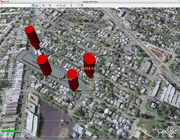
(a 1st Life/2nd Life mashup)
I've started working on a bit of summer laboratory experiment to see how Google Earth could become a platform for realtime mobile gaming. (Follow the link on the Flickr photo page to the URL you can load in your Google Earth client to see the game board in its current state.) With Google Earth open enough to place objects dynamically using the tag, a bit of SketchUp modeling and borrowing an enormous battleship model that construction dude uploaded to the SketchUp/Google 3D Warehouse, I started plugging away at a simple game mechanic based on the old Milton Bradley Battleship game.
Battleship, for those of you who never played, has a simple mechanic — two players set up their navy ships on a peg board, hidden from the other guy. You take turns plugging a peg into your side of the board, with each peg hole designated by a letter/number coordinate grid. When you plug a peg in, you say where you put it — E4! If your opponent has a ship in that coordinate (or part of one, actually), they say, sorrowfully, "Hit!" and you register that peg hole with a color to indicate a hit. If not, you just put in a neutral peg to remind you that you already tried that spot. The game continues into one player has sunk all the other guys ships.
The mechanic I'm experimenting with is simpler. One person places their ships using Google Earth and the other person goes out in the normal world with a mobile phone, a GPS connected to the mobile phone. The phone has a small Python script on it that reads the GPS and sends the data to the game engine, which then updates the Google Earth KML model showing the current state of the game grid. When the player who's trying to sink the ships wants to try for a hit, they call into the game engine and say "drop". The game reads back the coordinates at which the "peg" was dropped and shortly thereafter, the other player will see the peg appear at the coordinate it was dropped. If the peg hits one of the ships, it's a Hit, otherwise it's a miss.
Next Steps
As I continue developing the engine, I'll probably have the game engine let you know when you call in to do the "drop" whether it was a hit or not, or the opposing player can text or call to indicate the same.
I want to put in a "ping" command for the call-in battleship control center to help whoever's wandering around in the world navigate a bit. (Although the game is only really practical if you limit the boundaries over which it can be played.)
I need a lighter weight battleship — the current SketchUp model is too large, in data size terms and takes too long to initially load (although, it only needs to be loaded once.)
Goals
* Experiment with "1st Life" action reflected in "2nd Life" worlds (verso of the folly Ender suffered in Orson Scott Card's simply fascinating Ender's Game
* Learn KML
* Learn SketchUp
* Learn Python for S60
* Make a mobile/pervasive game in which one has to move around in order to play
Equipment
* Google Earth client
* Apache+Tomcat+MySQL (Java and JSP on the server-side computer)
* Nokia N70 and a little Python app to connect to the Bluetooth GPS and upload the data to the server
* Voice Application (for the battleship control center to drop/ping)
* SketchUp
Time Committed: * About 2 days learning stuff, and 1/2 a day programming the computer to make it do things.
Why do I blog this? To keep track of and share the near future laboratory experiments I'm doing this summer.
Technorati Tags: mobile, pervasive electronic games, pervasive media, play, urban play
[blogged by Julian Bleecker on research techkwondo]
Posted by jo at 08:22 AM | Comments (0)
October 11, 2005
Smart Artifacts
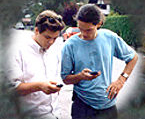
A Key Component of Pervasive Games
"Abstract: In this paper we present how smart artifacts can become a crucial element in pervasive games. In our vision, ‘magical’ artifacts play two roles: first, they are very attractive game gadgets (such as magic wands), second, they are able to handle the game (implementing the main game logic). We claim that in some cases no infrastructure would be needed to play a game. Artifacts, as we present here, are carried by players (or lying somewhere in the game area) and communicating through a wireless network. The vision has been inspired by a number of ideas and ongoing projects on smart devices and middleware platforms." From Smart Artifacts as a Key Component of Pervasive Games by Michal Roj; workshop paper for the Workshop on Gaming Applications in Pervasive Computing Environments 2004.
Posted by jo at 03:02 PM | Comments (0)
September 16, 2005
Wireless London

Addressing Creative Possibilities
In the last five years usage of wireless networks worldwide and in the UK, especially in London, has grown enormously. Community networks, commercial providers and public sector initiatives have been turning to this now-generic technology to provide themselves with local, low-cost networks. As this technology hits the mainstream, expanding the potential scale and utility of these networks, Wireless London addresses the creative possibilities, policies, practicalities and potential of Wireless London.
We see that mobile, pervasive computing will fundamentally change how we work, play and communicate. We want to be able to modify that environment creatively, adapting and customising it as a public space. By researching and developing open systems and tools, and providing models for how these technologies can be deployed, we aim to create a demand for high technical and social standards by raising people's expectations and understanding. See Wireless London: NodelSoftArchitecture...
Posted by jo at 10:44 AM | Comments (0)
June 27, 2005
NEIGHBOURHOOD GAMES

Transcending Existing the Boundaries
So what happens when kids come to the end of the level on their gameboys - what if they don't even have Gameboy? What is the fascination in sitting around in the park all evening? What is the most daring place you have seen tagged? Who decides when the game starts... and when it's over? What does a neighbourhood mean?
Neighbourhood Games--by John Paul Bichard--sets out to explore the possibilities of introducing cross-media games into the everyday neighbourhood environment, to propose ways in which games can be meaningfully structured across a broad range of channels, including fixed and mobile digital spaces and the "real" environment of the local neighbourhood.
Neighbourhood Games looks at ways in which gameplay normally associated with digital frameworks can be organised and played with or without these technologies. Key to this are not only the motivations and rewards a game sets up but also the nature of that gameplay in relation to environment, the aspirations of the game players and the existing social organisation in a particular locale.
The aim is to explore games methodologies that have the potential to enable a range of players to engage in play scenarios that are situated in the everyday environment and how far these are able to transcend existing the neighbourhood 'boundaries'.
Posted by jo at 12:47 PM | Comments (0)
June 22, 2005
CAPTURE THE FLAG ! DUMBO, Brooklyn
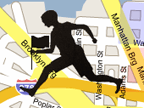
Totally Regressive Team Game
Join us for Capture the Flag (tonight), the totally regressive team game with bases, jails, sides and flags! Run beneath the bridges of Brooklyn's waterfront, treading over cobblestones and trolley tracks. Outwit opponents, hiding around warehouse corners before you find their flag, outmaneuver their flag keepers and dash home for a point in the pulse-quickening game of urban capture. efend your territory with its view of the Manhattan skyline by tagging trespassers.
These games have been wonderful; come capture the flag for a night of summer joy. The streets are your playground, reclaim them! Rain or shine, play at your own risk! Jay St. & York St. // 8:00 PM, DUMBO, BROOKLYN (F to York). Future games: If you want to host future games, e-mail kevin[at]newmindspace.com.
Posted by jo at 10:13 AM | Comments (0)
May 21, 2005
Games Migrate to Mobile Phones
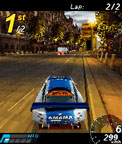
News from E3: the Electronic Entertainment Expo
"While next-generation consoles and cutting-edge graphics dominate the floor at E3, if you look around the edges, away from the crowds, you'll find a number of companies hoping that the next big platform will be one that you may already have in your pocket: the mobile phone.
Cell phones are largely unstandardized and often more than a decade behind the times in rendering power. Nevertheless, there are plenty of game producers banking on them.
Mobile-phone gaming has historically been driven by casual games, ports of old arcade games, and simplified versions of sports games. " by Lore Sjoeberg, Wired News. Read more >>
Posted by at 04:54 PM | Comments (0)
April 19, 2005
Mogame + IPerG

Body and Game Controller
"One of the central features in the future will no doubt be networked play. Most traditional games are inherently social, and a mobile gaming device with network access provides opportunities for social gaming virtually anywhere, anytime. The possibilities for new game mechanics, taking advantage of the full range of contextual information provided by pervasive systems, expand the research and design space further. This is one of the major research directions being explored by some ongoing projects in the Tampere GameLab. This is also where new approaches to Huizinga's bounded 'magic circle' of game playing are tried out and investigated." From The City Shaman Dances With Virtual Wolves–Researching Pervasive Mobile Gaming by Frans Mäyrä, Receiver #12.
Posted by jo at 11:24 AM | Comments (0)
March 31, 2005
Can You See Me Now in April

Blast Theory performs again their first hybrid reality game
Can You See Me Now?, the hybrid reality game developed by U.K.'s group Blast Theory and Nottingham University's Mixed Reality Lab will be perfomed twice this upcoming month of April in Cambridge, U.K. People from all over the world are able to play online on the virtual streets of Cambridge against Blast Theory's runners on the real city streets. To participate, you need to log-in to the game's website (Can You See Me Now) on April 1-3 from 2-5pm (GMT) or on April 6-8 from 4-7pm (GMT). A more extensive explanation of the game can be found at the same website.
Posted by at 07:39 PM | Comments (0)
March 25, 2005
Pervasive Game Development Today

24/7 Immersion
"...Pervasive gaming was first the vision of Swedish company It's Alive!, meaning location-based games that surround you, 24 hours a day, everywhere. When you walk down the street, you're walking through an adventure world draped on top of the real world, and people you meet may be characters in the same game you're playing. Pervasive games are built upon three core technologies: mobile devices, wireless communication, and sensing technologies that capture players’ contexts. It is actually the blend of technologies combined with the location-based and often public nature of game play, gives pervasive games their distinctive identity [Bridging the Physical and Digital in Pervasive Gaming]." From Pervasive Game Development Today by Fabien Girardin.
Posted by jo at 02:10 PM | Comments (0)
March 10, 2005
Games
Two More by Jane McGonigal
"ABSTRACT: Ubiquitous computing and mobile network technologies have fueled a recent proliferation of opportunities for digitally-enabled play in everyday spaces. In this paper, I examine how players negotiate the boundary between these pervasive games and real life. I trace the emergence of what I call “the Pinocchio effect” – the desire for a game to be transformed into real life, or conversely, for everyday life to be transformed into a "real little game.” Focusing on two examples of pervasive play – the 2001 immersive game known as the Beast, and the Go Game, an ongoing urban superhero game — I argue that gamers maximize their play experience by performing belief, rather than actually believing, in the permeability of the game-reality boundary." From A Real Little Game: The Performance of Belief in Pervasive Play by Jane McGonigal, Digital Games Research Associaton (DiGRA) "Level Up" Conference Proceedings, November 2003
"ABSTRACT: The increasing convergence and mobility of digital network technologies have given rise to new, massively-scaled modes of social interaction where the physical and virtual worlds meet. This paper explores one product of these extreme networks, the emergent genre of immersive entertainment, as a potential tool for harnessing collective action. Through an analysis of the structure and rhetoric of immersive games, I explore how immersive aesthetics can generate a new sense of social agency in game players, and how collaborative play techniques can instruct real-world problem-solving." From This Is Not a Game: Immersive Aesthetics & Collective Play, by Jane McGonigal, Digital Arts & Culture 2003 Conference Proceedings, May 2003.
Posted by jo at 05:25 PM | Comments (0)
March 03, 2005
Frequency 1550

Location-Based Mobile Games and Educational Content
"Waag Society is developing a 'mobile learning game' pilot together with IVKO, part of the Montessori comprehensive school in Amsterdam. It's a citygame using mobile phones and GPS-technology for students in the age of 11-12 (so called HAVO+MAVO basic curriculum). It is a research pilot examining whether it's possible to provide a technology supported educational location-based experience. In the Frequency 1550 mobile game, students will be transported to the medieval Amsterdam of 1550 via a medium that's familiar to this agegroup: the mobile phone." The pilot took place from 7 to 9 February and is supported by KPN Mobile's UMTS network. They promise to show more of the development process and the results of the pilot soon. [Posted by Adriana de Souza e Silva]
Posted by at 01:23 PM | Comments (0)
March 02, 2005
YellowArrow at DiVA

Art in Motion
Digital and Video Art Fair [DiVA] kicks off with an opening after party on March 10th that will definitely be an event in itself. The party will feature special performances by YellowArrow. Attendees are invited to participate in the art in motion. In addition to YellowArrow stickers’ distribution and projections displaying the content of the YellowArrow Global Gallery, mobile YellowArrows will point out a series of live micro performances staged throughout the party and announced via TXT messaging.
DiVA is the first art fair in the United States dedicated exclusively to digital and video art. DiVA will serve as an international destination for collectors, art dealers, museums, curators, and artists. Around forty galleries willfeature the diverse and innovative work of new media artists exploring and pushing the digital envelope. Digitally created work is a dynamic platform of expression in contemporary art that includes film and video, animation, photography, printmaking, sculpture, painting, architecture, and performance.
The YellowArrow is a global public art project that merges graffiti and sticker culture with wireless media, creating an interactive forum for people to leave and discover messages pointing out what counts in their environment.
Participants place arrows to draw attention to different locations and objects -- a favorite view of the city, an odd fire hydrant, the local bar. Each arrow has a unique code, and by sending a text-message (SMS) from your mobile phone to 1.646.270.5537 in the format "+code your message" you associate a short text with your arrow -- messages can range from literary quotations to personal commentaries to game-like prompts to action.
When another person encounters the arrow, he or she sends "code" to 1.646.270.5537 and immediately receives the message associated with it on their mobile phone. Through this location-based exchange of text-messages, the YellowArrow becomes a symbol for the unique characteristics, personal histories, and hidden secrets that live within our everyday spaces. And it's not just places, it's people: YellowArrow TXTshirts are individually coded just like the stickers.
YellowArrow text-messaging is currently compatible with all phones and service providers in the US as well as internationally with those networks under the GSM standard. The website, YellowArrow.org, allows participants to annotate their arrows with photos and maps and is the online gallery of YellowArrows placed throughout the world -- visit to order arrow stickers and tshirts and see announcements about new events and features.
Posted by jo at 11:16 AM | Comments (0)
February 10, 2005
Seamful Game
![ubicompclient[1].gif](http://www.turbulence.org/blog/images/ubicompclient[1].gif)
Glitches are Integral
Seamful Game, by Matthew Chalmers from the University of Glasgow (Scotland), is a GPS and WiFi based game played in the streets using PDAs. To be successfull, two teams of runners must develop an understanding of the network coverage and the effect of signal strength. It thus turns the patchy network coverage, usually seen as a problem, into an important feature of the game.
Players travel around a designated area collecting digital "coins" (which appear all over the map, including in places not covered by the 802.11b wireless network) and uploading them to get points. To gain these points, players must upload the coin to the server, by pressing the "upload" button on their PDA in an area where there is 802.11b coverage. If players attempt to upload coins in an area not covered by WiFi, the upload fails and they loose all the coins they are carrying. [blogged by Regine on near near future]
Only by understanding the boundaries of the network, and the effect of signal strength on their ability to upload coins, and thus score points, will players be successful in winning the game.
The "Pick Pocket" feature of the game allows a player to steal coins from other players nearby. The player has to be inside network coverage, and use the GPS to get within 10 meters of another player (also within network coverage). By pressing the "Pick Pocket" button, they can grab any coins the victim is carrying but has not uploaded yet.
Plus, scattered around the map are "Mines". If a player moves to within 10 meters of a mine, it will detonate and the player's PDA will be temporarily disabled.
Posted by jo at 09:36 AM | Comments (0)
January 13, 2005
Mogi
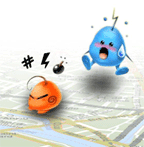
Location-Based Gaming
"Real and virtual have finally met in fun - reporting on Mogi, the brilliant location-based online multiplayer experience in Tokyo. Now phone networks are faster and more mobile devices know where they are, permitting a second generation of location-based multiplayer games. Undoubtedly the leading second-generation mobile phone game is Mogi: Mogi uses both the position of players in the landscape, and the landscape itself to generate play...Mogi is a collecting game - "item hunt". The game provides a data-layer over the city of Tokyo. As you move through the city, if you check a map on your mobile phone screen, you'll see nearby items you can pick up and nearby players you can meet or trade with." From Mogi: Second Generation Location-Based Gaming by Justin Hall, theFeature, April 1, 2004.
Posted by jo at 08:11 AM | Comments (0)
December 27, 2004
netzwissenschaft
![]()
Emerging Infrastructures of All (Inter)net Research
Dr. Reinhold Grether's network research | netzwissenschaft site maps the "emerging infrastructures of all (inter)net research endeavours. net.science as an anthropology of connectivity is trying to overcome the constraints of specialist method transfers on net matters. the protuberance of technical networks necessitates a professionalization of human net knowledge. neither the isolation of concepts as in basic research nor the encapsulation of processes as in applied sciences will ever be able to adequately describe the complex autopoiesis of networks. net.science is undoubtedly developing into a scienza nuova of its own right."
Check out his Mobile Art and Virtual Performance research areas.
Posted by jo at 04:45 PM | Comments (0)
December 14, 2004
Where on-line meets on the streets:
experiences with mobile mixed reality games
"We describe two games in which online participants collaborated with mobile participants on the city streets. In the first, the players were online and professional performers were on the streets. The second reversed this relationship. Analysis of these experiences yields new insights into the nature of context. We show how context is more socially than technically constructed. We show how players exploited (and resolved conflicts between) multiple indications of context including GPS, GPS error, audio talk, ambient audio, timing, local knowledge and trust. We recommend not overly relying on GPS, extensively using audio, and extending interfaces to represent GPS error." From M.Flintham, R.Anastasi, S.Benford, T.Hummings, A.Crabtree, C.Greenhalgh, T.Rodden, N.Tandavanith, M.Adams, and J.Row-Farr (2003). Where on-line meets on the streets: experiences with mobile mixed reality games. In Proceedings of the conference on Human factors in computing systems, pages 569–576, Florida, USA. [via pasta and vinegar]
Posted by jo at 02:53 PM | Comments (0)
December 01, 2004
HERE

A Meta.Pervasive.Game
HERE, by Jason Wilson and the members of (N.I.N.E), is a pervasive game allowing 2-16 people to get to know better a city. Players get markers, chalk, sticky notes and 2 identical decks of 50 cards each.
Each team get their cards which come with a set of instructions to follow. The player who draws a BLANK CARD must invent the instruction for that round. The cards are all printed on sticker paper, and the players are encouraged to stick the action cards up in the locations as they're finished, that way, at some later date, a random pedestrian may end up being inspired toward detournement.
A new version of the game will be launched December 4th during the La Superette event and it will come with a copy of their own "community gaming map." By the look of the pictures, that game won't come too soon in my town.
From near near future
Posted by jo at 12:44 PM | Comments (0)
November 09, 2004
Messa di voce

Can't stop the fun with those walls
At this year's Ars Electronica, I tested the amazing Messa di voce by Golan Levin, Zach Lieberman, Jaap Blonk and Joan La Barbara.
A computer equipped with a video camera tracks the position of visitors’ heads and analyzes the sounds they make. As a reaction to it, various graphic compositions are projected onto a screen. With the help of a tracking system, these visualizations can be shown in a way that makes them seem to be emanating from the mouths of the people themselves. (via inspired by angermann)
More recently, I heard about two other creations that allow people to play with walls:
Greg Roberts' PlayMotion! combines computer vision algorithms and videogame graphics techniques to turn ordinary walls, floors, and ceilings into virtual playgrounds.
Thanks to Bill Read for the tip.

Bloomberg ICE space in Tokyo observes the visitors and continually computes its appearance in accordance with their behaviour. In stand-by mode, the icicle displays columns of numbers. Depending on the current share prices, they expand on the LED display or they shrink and disappear altogether.
But when a visitor approaches the glass wall, infrared sensors detect her/his presence and ask her/him to participate. The columns of numbers begin to flutter and fluctuate; a menu appears and offers various games - electronic volleyball, a wave generator or a digital harp, for example. The icicle can be used to play music synesthetically in that the sounds played are replicated on it in the form of brightly lit, colorful tree branches.
Posted by jo at 01:08 PM | Comments (0)
Location-based mobile phone games
IN-duce published a list for mobile phone games using GPS or cell towers signals, there's also a lists of other location based (or augmented reality) mobile games.
Originally from The Invisible Rabbit, reblogged on near near future.
Posted by jo at 01:03 PM | Comments (0)
October 22, 2004
GilbertandGrape

Kiosk Correspondence
We'd like to invite you all to receive exclusive reports of GilbertandGrape's whereabouts at the Rogaland Kunstsenter, Norway and the Vlepo Gallery, NY. The performance can also be partly viewed online. GilbertandGrape will be staked out in a red phone kiosk by the pier on the west coast of Norway between 5pm and 7pm on October 25th, 2004. GilbertandGrape will call the Rogaland Kunstsenter from the phone kiosk every 15 minutes and upload a photograph from this moment to their website.
Kiosk Correspondance is a sub plot of the GilbertandGrape performance Lone Ranging Romance. Between 2004 and 2008 GilbertandGrape and their lone ranger, a 20 kilo stuffed moose head, will travel the coasts of England and Norway in a Volvo Amazon to search out and collect stories from people with an interest in nostalgia, document vague memories, exchange taped music that has romantic significance, and at the end of the day watch the sun set together with the people we've met. For more information on Lone Ranging Romance see our website. Love and Scandal, GilbertandGrape
Posted by jo at 03:53 PM | Comments (0)
October 21, 2004
Malleable Music

Social tech is performative
"...Malleable Mobile Music system is my idea of truly social (i.e. performative) mobile tech.
"'Historically, music was never meant to exist in isolation,' Tanaka says. 'There was always a physical, acoustical, and even social context. These kinds of technologies can add some of those elements back in to the listening experience'...As one participant naturally sways to the groove, the PDA's motion sensor detects his motion and shifts the tempo of the song. With the song's intensity building, another listener subconsciously grips her PDA tighter, introducing echo effects into the mix. The closer that listening partners move to each other, the more prominent their part in the song becomes. Meanwhile, the software applies various 'error correction' techniques to prevent an onslaught of arrhythmic noise, unless of course that's the goal. As they listen to it, the mobile music orchestra transforms the tune into a dubby, spacey version of the familiar Bjork song...Someday, malleable music may even become an art form in its own right, leading to a duet between the artist and the audience."
Check out the Ubicomp 2004 paper for more detail. Originally posted by Anne Galloway on purse lips square jaw.
Posted by jo at 11:43 AM
October 15, 2004
zaMob

South Africans can play too
What is zaMob? Simply put, zaMob is a South African flash mob. If you're interested in the idea of the flash mob, add your name to the zaMob database and one day you may recieve an e-mail to let you know about an upcoming flash mob in your area. What if my town is not in the list? E-mail the name of the town that you are in to zamob at webmail.co.za and your town will be considered for inclusion in the zaMob town list. Otherwise, sign-up under the town nearest to where you are.
Posted by jo at 01:43 PM
Mapping
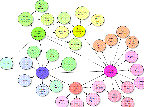
Alternative Categories
"In preparation for Wednesday's Urban Gaming lecture, we thought we'd make a map. We've mapped psychogeography, nomadic communication and technologically infused public space as enablers of the urban gaming explosion. Gaming is the perfect structure for experimenting with these new tools, places and communities. The dynamics between online and offline players, person and space, space and technology, person and technology are being stress tested and observed in the form of games in media labs, art collectives and companies throughout the world. And it's evolving to be a mechanism for social activism as well- so there you go!" From community-centric.
Posted by jo at 01:12 PM | Comments (1)
September 02, 2004
ILoveBees Breaks Into the "Real World"

Beekeeping Mobs
Posted by vpisteve at 11:27 PM on Alternative Reality Gaming Network: August 24, 2004. It all began at 6:07 am PDT. Payphones from coast to coast began to ring. A twelve-hour wave of carefully planned phone calls began to sweep the country, and Halo fans, Beekeepers, the Media and the just plain curious were there to try to intercept them.
This morning, we got to find out what was in store for those who were following the events of Dana and the rogue AI attacking her aunt's website. While many were expecting Halo 2 demo disks, what they got instead was one of the largest, most complicated distributed interactions in ARG history. Hundreds of people around the country descended upon over 200 locales, working as a team to answer phone calls correctly, in order to unlock a series of audio clues.
While we don't have the space here to go into the story itself (for that, check the links below), here's how the whole thing worked: Players were presented with a web page that listed 30 blocks of seven GPS coordinates, which turned out to represent payphones around the country. Each location had a specific time attached, and each block of seven locations had a common password. As the phones started ringing at the exact corresponding time, players realized that they must respond correctly to the voice on the other end in order for something to happen. It was determined that players needed to provide the nickname for the AI that was calling them, plus the password listed for their location. If successful, the web-page immediately updated, indicating success. Two successful responses per group of seven then resulted in an audio file being unlocked. Players successfully unlocked 22 of 30 files the first day, with another chance to unlock the remaining ones every 24 hours. These audio files, when assembled, are revealing a fascinating story.
And this is only the beginning!
Forums and IRC channels broke all records today. The main chat room, #beekeepers, peaked at over 300 users at one point. In addition, the press is taking notice of what's going on. Word is that G4TV's Pulse will be airing a story about ilovebees this Friday, so stay tuned.
Here's a video of one event in Georgia. (6.7 MB)
Unfiction Ilovebees Forums
Guide
Quickstart
Wiki
Chat
Plot Timeline
Photo credits
Berkeley: Stitch
Burbank: MrBabyMan
See also This Week in ARGs: Flash Mobs of Beekeepers?? and I Love Bees.
Posted by jo at 10:27 AM | Comments (2)
August 10, 2004
mobile hawker
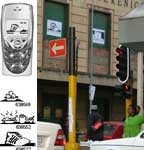
mobile hawker
If you are unfamiliar with South African slang, you won't know that a hawker is a street seller - one who might approach your car, or have a table on the side of the road.
With South Africa's high unemployment rate, and pay-as-you-go mobile phone non-contracts, both hawkers and ring tones have become completely pervasive on the streets.
marcus neustetter brings these two cultures together, by selling his cell phone art (geared for the cheapest model mobile in SA) for the cost of an SMS. Similar to the physical hawkers, he has also taken to the streets with his goods; shown here are ads for his immediate access art in downtown Johannesburg. These pics are not only regularly downloaded, but often fowarded to friends, and used as the background image on main screens.
Posted by at 05:11 AM | Comments (0)
August 09, 2004
the polite force
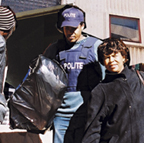
polite force
Christian Nerf's polite force project began as a subversive public performance, speaking back to the legacy politics always already in play in the 'New South Africa.' He took riot gear uniforms (complete with shields and helmets) from during the Apartheid era, and modified them to read 'polite,' rather than 'police,' asking his actors to carry bags, help people cross the street, light cigarettes, and compliment the outfits and hairdos of onlookers. The project began on September 11, 2002, also speaking directly to the politics of the post-9/11 world, and therefore garnering interest beyond South African borders. Through word of mouth, email, and his (admittedly, largely outdated) website, he's had invitational polite performances (by friends and strangers alike) all over South Africa, in New York City, Trinidad, Washington DC, and (soon to be) Boston. There are now several editions of varying polite uniforms, including his new project, the metro polite (shown, in bullet-proof vests and peak-caps), that come with guidelines and potential training sessions (though some galleries insist on waiver forms for their wo/men in uniform). You can ask to borrow, print or obtain a polite force uniform through Mr. Nerf, at the site linked above. (Posted by Nathaniel Stern)
Posted by at 12:29 PM | Comments (0)
July 31, 2004
Mobile Culture-Scratching

by Julie Andreyev, at New Forms Festival 2003, consists of 3 cars fitted with video projection on the rear windshield. Each car has a theme determined by the character of the car, and by characteristics of the host city where the fleet is mobilized. The choice of cars for the project reflects the specific car culture of the host city expressed through customization and branding.
Mobile Equipment
The cars are set up with equipment to allow for mobile video downloading, and video mixing using data from the car. While the fleet is mobile, videographers in the downtown site are creating videos for projection on the cars. The themes are used as a guide for them to create footage of the activities of a city's inhabitants.
Networked Process
This footage is uploaded by the videographers onto a web server. Then, the footage is downloaded by the cars as they drive by WIFI (wireless internet) download sites. A sound artist records ambient sound using a microphone held outside the window of one of the cars, mixes this, and plays it back using an FM transmitter. Nearby cars can tune into our frequency and hear the audio sampling. Each car is equipped with a sensor and software patch that interprets data from the car.
Software Interface
For example, one sensor reads data from the engine speed. This data causes a kind of 'jittery' effect to be applied to the video. The faster the car revs, the more 'jittery' the video. In this way, not only are the inhabitants of the city portrayed, but also the car is expressed in the video. After the performance, the cars can be driven into a gallery space where they can be set up to project their archive of the evenings' videos.
Mobile Portrait of the City
The goal of this project is to create a mobile portrait of the city through video and audio sampling of real time events. VJ-Fleet relies on current VJ (or video jockey) culture and the hosting city's local car and social culture. For each performance the project is customized and scaled to reflect the particular nature of the host city.
Posted by michelle at 06:37 PM
July 30, 2004
On Liveness and Presence
What is Live Art?
This from the UK: "Unlike with opera, people often ask, 'What is Live Art?' The answer is people have been experiencing it for the last hundred years, from the earliest events at the Cabaret Voltaire where DADA was born to the happenings of the Sixties which influenced Andy Warhol, and in the 21st century this tradition continues to mutate." 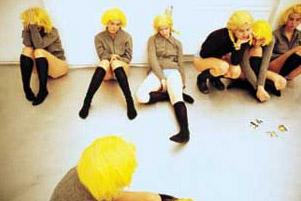
Today Live Art is witnessed at perfomances by Vanessa Beecroft or The Battle of Orgreave by Jeremy Dellar. Live Art is an interrogation of the aesthetics of presence. Live Art is about being there.
"Live Art mixes genres and diverse cultural experiences to express the complex organisation of contemporary life. It often involves work which questions commonly held assumptions. Live art is the trash-can of culture recycling and celebrating the debris of the modern world."
The History
: In 1965 Kaprow explained his evolution from collage to environments and happenings: "The action collages then became bigger, and I introduced flashing lights and thicker hunks of matter. These parts projected further and further from the wall into the room, and included more and more audible elements: sounds of ringing buzzers, bells, toys, etc., until I had accumulated nearly all the sensory elements I was to work with during the following years...." His works expanded until they filled the gallery, creating an integrated environment for the spectator. "I immediately saw that every visitor to the environment was part of it. And so I gave him opportunities like moving something, turning switches on -- just a few things. Increasingly during 1957 and 1958, this suggested a more 'scored' responsibility for the visitor. I offered him more and more to do until there developed the Happening...The integration of all elements -- environment, constructed sections, time, space, and people -- has been my main technical problem ever since."
Kaprow's progress did not occur in a vacuum, as he readily acknowledges. Robert Rauschenburg, Claes Oldenburg, and Jim Dine, among others, were also working on theatrical pieces, although they soon returned to more traditional areas; In Europe, Wolf Vostell and the Fluxus Group, and in Japan, the Gutai Group, were all investigating similar directions.
The Theory of Happenings: The Happening, as Kaprow developed it, is a non-verbal, theatrical production that abandons stage-audience structure as well as the usual plot or narrative line of traditional theatre. Although a compartmented organization may be used, the performers are considered as objects -- often kinaesthetically involved -- within an overall design of environment, timing, sound, colour and light. Found environments are often used and built upon, but the events are not casually arrived at, nor are they entirely accidental and spontaneous.
His view was that the Assemblage was to be "handled and walked around", the environment" was to be "walked into", but the happening was to be a genuine "event" involving spectator participation and no longer confined to the museum or gallery. Performers are encouraged to capitalize upon unplanned occurrences while acting out fantasies based on real life within a certain roughly pre-ordained structure that suggests symbolic and universally basic themes and meanings. A field of aesthetic operation is thus created in relation to life, combining artfully determined materials with strong associational properties, and dimensions with events and things from the sphere "outside" of customary definitions for art.
In the following networked performance types we directly see the influence of happenings particularly in the emergence of wireless network enabled Urban Gaming such as the Go Game. Go Game started off as a bunch of digerati having fun with their handhelds. Then it started becoming popular so the developers began marketing their services as event producers to corporations. Now their website has this decidedly corporate slant.
Pac-Manhattan was developed out of the NYU Interactive media program...possibly interesting if it doesn't fizzle out....
Urban Challenge, urrr I guess it's now Verison Urban Challenge. Enough said.
FlashMobs have matured to smart mobs.
GeoCaching is an entertaining adventure game for GPS users. Participating in a cache hunt is a good way to take advantage of the wonderful features and capability of a GPS unit. The basic idea is to have individuals and organizations set up caches all over the world and share the locations of these caches on the internet. GPS users can then use the location coordinates to find the caches. Once found, a cache may provide the visitor with a wide variety of rewards. All the visitor is asked to do is if they get something they should try to leave something for the cache.
Posted by michelle at 11:40 AM | Comments (0)
Networked Local Performances
Three Performances: 2001-03: A Comment
The three location-specific performances Dialtones: A Telesymphony, Flip Flop, and Texterritory --you had to be there to experience them--introduced in the last posts were produced between 2001 and 2003 They made use of networked technologies--mobile phones, video/audio relayed by wireless broadband--to involve their audiences in the creation of the performances. Each has done this successfully in its own way, while maintaining control, in the case of Dialtones, a tight control, over the performance itself.
Posted by newradio at 10:06 AM | Comments (0)
July 29, 2004
Networked Local Performance
Flip Flop
Flip Flop comprises a group of motion poets, cyborgs, and sound, video and net-artists who collaborate on ‘site-specific remote connection theater performances’ that, in their words, "challenge boundaries between audience and performer, on-stage and off-stage, the venue and the street outside."
For instance: the audience is invited to a party where, over the course of the evening, one of the partygoers (actor and motion poet Ajay Naidu) emerges as a performer, and the audience gradually realizes that it is participating in theater. As the performer shifts between private conversation and "narrative outbursts," the event shifts in mood and form.
Simultaneously, a performer, equipped with a wearable multimedia-streaming computer roams the neighbourhood. The route is choreographed to synchronise with the performers story, and a live "point-of-view" video feed (as well as audio) from the wanderer is relayed by wireless broadband to the performance venue. Flip Flop was performed in July, 2002. Read a report on Live Streaming as Dramaturgy.
Posted by newradio at 06:17 PM
